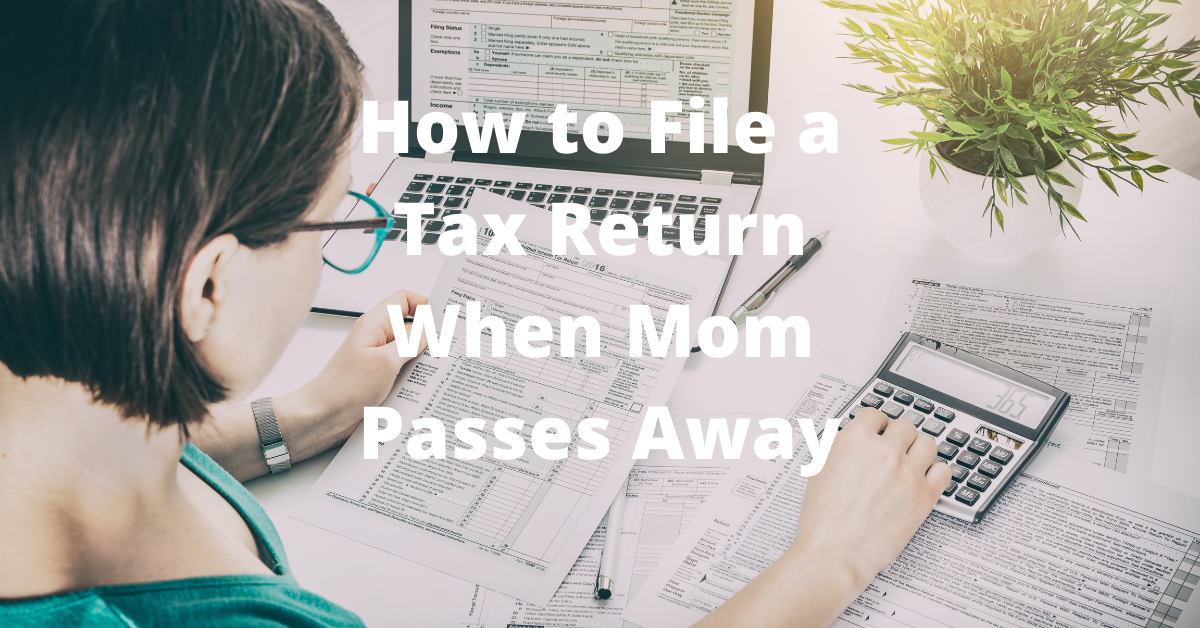If you are preparing a 1040 federal income tax form for a spouse or parent, you are grieving while also gathering tax records. If you are the executor for an estate, you may not know the history of the decedent’s tax situation nor have the access you need to important documents. To help alleviate the problems, AARP’s January 27th article entitled, “How to File a Tax Return for a Deceased Taxpayer,” gives some guidance on how a decedent’s tax return might be different from the usual 1040 form, as well as the pitfalls to avoid as you prepare to file.
- Marital filing status. A surviving spouse should file a joint return for the year of death and write in the signature area “filing as surviving spouse.” The spouse also can file jointly for the next two tax years if he or she has dependents and has not remarried. This special provision gives the surviving spouse benefit from the advantages of a joint return, such as the higher standard deduction.
- Get authorization to file. If there is no surviving spouse, someone must be chosen to file the tax return. This could be the estate’s executor if there was a will, the estate administrator if there is not a will, or anyone responsible for managing the decedent’s property. To prepare the return — or provide necessary information to an accountant — you will need to access the decedent’s financial records, and financial institutions usually want to see a copy of the certified death certificate before releasing information.
- Locate last year’s return. That is your starting point. Returns filed electronically must have the password to sign into the software program that was used. A major step in estate planning is, therefore, to give passwords to a trusted person or instructions about how to access that information after your death. However, if you cannot find last year’s return, submit Form 4506-T to the IRS to request a transcript of the previous tax return. This shows what was on the return, including filing status, taxable income, tax payments and more. The IRS also can provide source documents, such as a W-2 or a 1099-INT from a bank or a 1099-R for a pension distribution from a union — all the documents sent to the IRS on your behalf — which can help you know what documents to collect now.
- Update the address on the return. If you are not a surviving spouse or did not live with the decedent, be sure to update the tax return to list your address as an “in care of” address, so anything from the IRS will come directly to you.
- Review medical costs. The deduction for medical expenses is the amount that exceeds 7.5% of adjusted gross income. If the decedent was chronically ill, medical expenses can add up. Hospital stays, nursing homes, prescriptions and care from aides can add up and hit that threshold.
- Get extra time to file and/or make payments. The executor or surviving spouse can request an extension and estimate what any tax liability might be. The IRS may also give you a break on penalties for not filing because you were dealing with funeral arrangements, for example, but you have to cite a reasonable cause.
- Cut down the IRS’ time to assess taxes. The IRS has three years to decide if you have paid the right amount for that tax year. You can cut that to 18 months, by filing Form 4810. That is a request for a prompt assessment of tax. As you prepare the return, you may miss a 1099 or other document, unintentionally understating income. If you skip filing Form 4810, the IRS could notify you of taxes owed up to three years later, likely after you have distributed the estate’s funds.
- You may be filing multiple returns. If someone dies in January or February, you may be responsible for filing the tax return for last year and this year. There might be a filing obligation for that brief period of time that the person was alive in this year. The other situation is that the decedent failed to file a previous year’s return, perhaps because he or she was very ill. A notice will be sent from the IRS stating that they do not have a copy of the decedent’s return. This is another reason it is important to file Form 4810, requesting that the IRS has only 18 months to assess tax. You do not want any surprises. A tax return, or Form 1041, also may need to be filed for the estate, if it has earned more than $600. Since it can take a long time to wind down an estate and pay heirs, a Form 1041 may need to be filed the following year, too — a healthy brokerage account could generate more than $600 income for the year. It may also take a long time to distribute the estate.
- Estate taxes. An estate tax return, Form 706, must be filed if the gross estate of the decedent is valued at more than $12.06 million for 2022 or $11.7 million for 2021. However, that is a high threshold.
If all this sounds like it is too much, ask an experienced attorney like Vick Law, P.C for help. A legal professional will know what information is required.
Reference: AARP (Jan. 27, 2022) “How to File a Tax Return for a Deceased Taxpayer”

